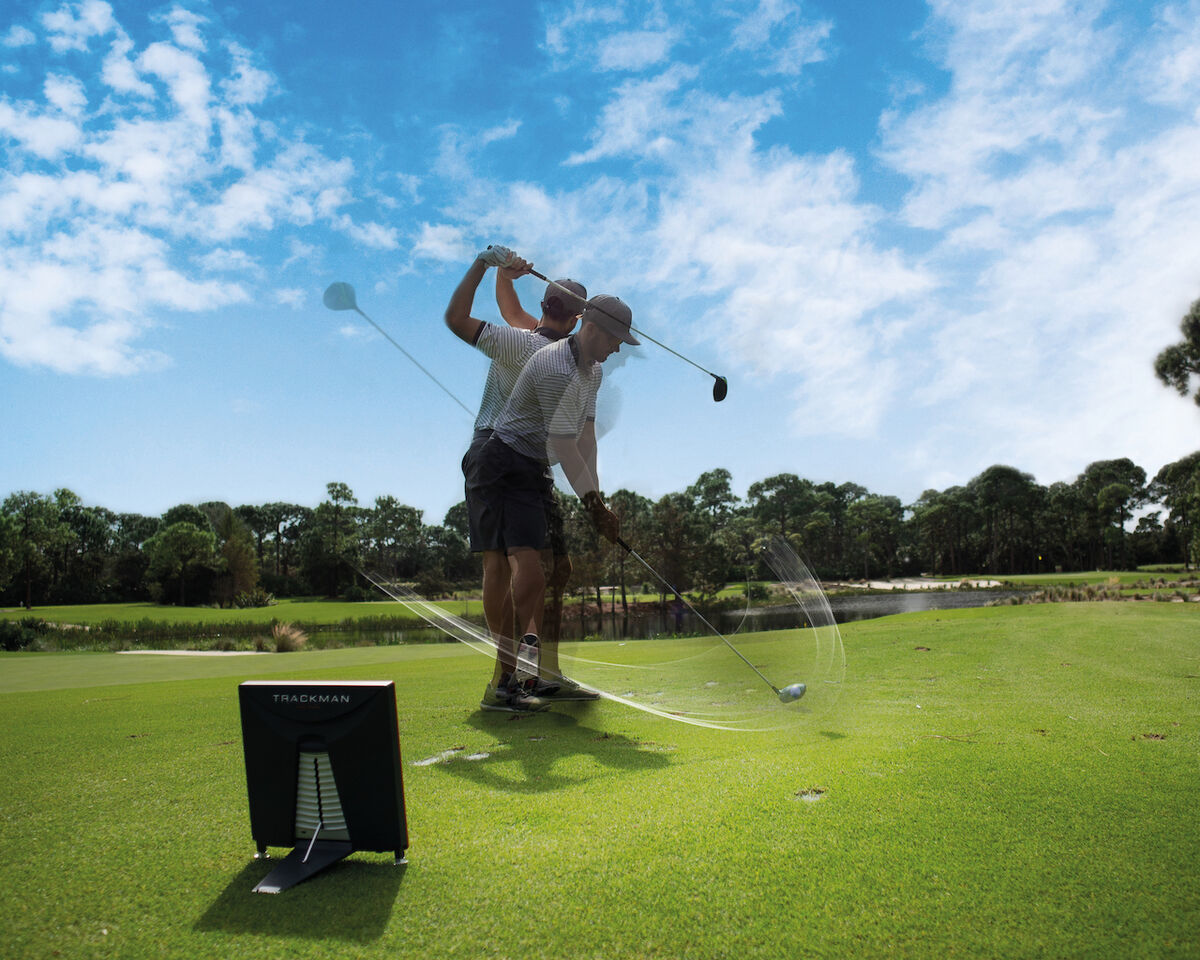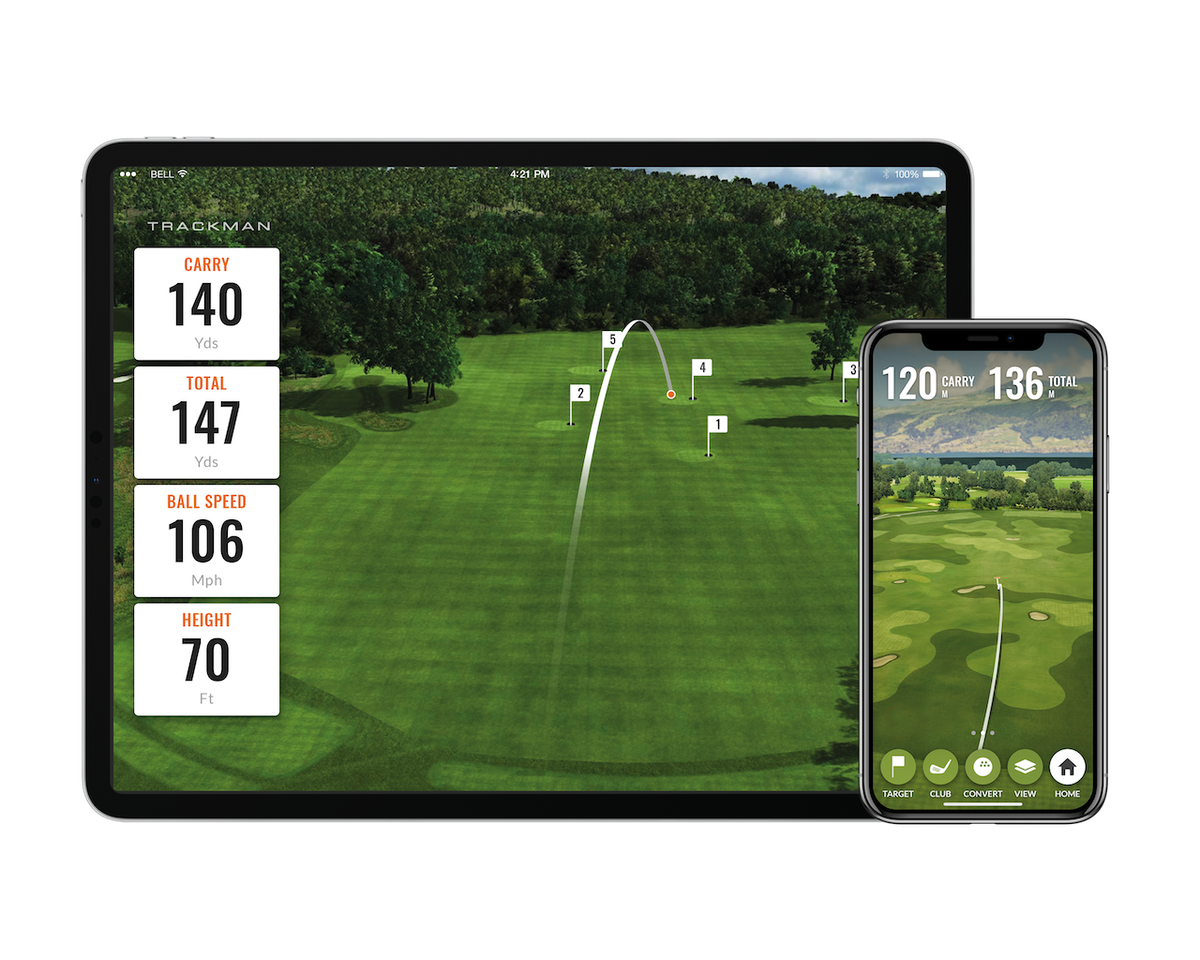How Trackman Golf Systems Are Changing the Game

Whether you’re serious about improving your golf game, or just desperate to feed your inner golf beast over the winter, the technology from Trackman Golf can help. The launch monitor that countless touring professionals use to sharpen their games has never been more accessible to the everyday golfer than it is today.
Trackman Golf Simulator
Trackman gained popularity in the golf world as professional golfers took advantage of some of the world's best launch monitor technology to hone in every detail of their game. From spin rates to launch angles and smash factor, no detail is too granular in today’s game.
Trackman also boomed among golf retailers, pro shops and instructors, as the same technology helps players dial in equipment, and allows instructors to give invaluable golf lessons by utilizing Trackman data to give students an unbiased look at what is and isn’t working in their swing. The technology is even integrated into golf broadcasts to give fans perspective on the club speed, ball speed, shot shape, and distances of some of the world’s best golfers.
How Does Trackman Work?
In simple terms, Trackman uses a camera-radar combination to track almost any metric imaginable about a golf swing, impact, and how the ball reacts.
To break it down a little more, the newest Trackman launch monitor, the Trackman 4, has Optically Enhanced Radar Tracking (OERT) technology that includes two synchronized radar systems and a built-in camera that is also synced with the radar.
The two radar systems each serve different functions. One is a short-range system that captures club and impact data, perfect for giving you more information than you ever wanted about your putting stroke. The second radar is a long-range system that tracks the ball.
All of this technology is used to spit out 51 different data points relating to club, ball, and putting. Some of the most important, and well-known Trackman numbers include club speed, face to path, ball speed, smash factor, spin rate, carry distance, and total distance. If that’s not enough, there’s a complete breakdown of every data point collected by Trackman 4, and what they actually mean, at the bottom of this article.

How Much Does Trackman Cost?
A brand new Trackman 4 unit starts at $20,000. Even a used version of the previous model still calls for around $14,000.
Given the prohibitive cost, these aren’t exactly made for the weekend warrior to put in the DIY simulator in their basement, although some recreational golfers may splurge on their own personal Trackman. It’s more practical to find a Trackman in retail, at a public indoor driving range, a nearby golf learning center, or on the driving range of a top-level professional tournament.
Breakdown of Trackman Data
It would be impossible to react to every data point Trackman offers on every swing. It’s recommended that you pay attention to no more than two or three numbers at a time. Between the two radar systems, Trackman provides dozens of club, ball, and putting data points.
Club and Ball Data
Here’s a complete list of the club and ball data that Trackman collects on every swing, with an explanation of what each metric is.
Type | Data | Notes/Trackman’s Definition |
Club | Club Speed | Measured the moment before impact |
Club | Attack Angle | The vertical direction of the club head’s geometric center movement at maximum compression of the golf ball |
Club | Dynamic Loft | Loft on the club face at impact |
Club | Club Path | The in-to-out or out-to-in movement of the club head at impact, relative to the target line |
Club | Spin Loft | Spin loft influences spin rate, and is approximately the difference of dynamic loft minus attack angle |
Club | Swing Plane | The angle between the ground and the club head through the bottom portion of the swing |
Club | Swing Direction | The angle between the target line and the direction the club head travels during the bottom portion of the swing |
Club | Low Point | How far before or after impact the low point of the swing occurs, with a negative low point indicating the low point occurs after impact and a positive number meaning the low point occurs before impact |
Club | Impact Height | How high on the club face the ball is struck |
Club | Impact Offset | How far on the heel or toe of the club face the ball is struck |
Club | Dynamic Lie | Shaft angle at impact |
Ball | Ball Speed | |
Ball | Smash Factor | Ball speed divided by club speed |
Ball | Launch Angle | Measured immediately after separation from the club face |
Ball | Spin Axis | The angle between the horizon and the line the golf ball spins around |
Ball | Height | The highest point the ball reaches |
Ball | Curve | The perpendicular distance between the launch direction and landing position |
Ball | Landing Angle | The angle between the ball’s path and the ground when the ball lands |
Ball | Carry | The distance the ball travels in the air |
Ball | Side | The perpendicular distance between the target line and landing position |
Ball | Total | The total distance a ball travels, including carry and roll |
Ball | Side Total | The total perpendicular distance between the target line and the ball’s finish position, including roll |
Putting Metrics
In addition to the club and ball metrics above, here are the putting club and ball data points that Trackman collects.
Putting Club | Speed |
Putting Club | Backswing Time |
Putting Club | Stroke Length |
Putting Club | Forward Swing Time |
Putting Club | Tempo |
Putting Club | Dynamic Lie |
Putting Club | Attack Angle |
Putting Club | Club Path |
Putting Club | Face Angle |
Putting Club | Face to Path |
Putting Ball | Launch Direction |
Putting Ball | Ball Speed |
Putting Ball | Skid Distance |
Putting Ball | Roll Speed |
Putting Ball | Speed Drop |
Putting Ball | Roll % |
Putting Ball | Break |
Putting Ball | Entry Speed Distance |
Putting Ball | Total Distance |
Putting Ball | Side |